Octopai and Dataversity collaborated to conduct The 2020 Business Glossary Automation Survey. They collected insights from over 400 business and IT professionals across a wide range of industries, shining light on why automation metadata operations and the business glossary are priorities for organizations today.
They found that manual data management is a process that can bleed hours from a BI team, and the time often turns into days, weeks and even months. Moreover, the levels of frustration are through the roof as BI & Analytics teams spend more time searching for their data than actually analyzing it. Therefore it comes as no surprise that of the respondents, a whopping 76% of them reported that automation of metadata operations was a number-one need for BI teams.
Manual Processes Frustrate BI Professionals
Ninety-six of the 110 Information/Data Governance professionals surveyed said they were somewhat to extremely frustrated every day by manual mapping and metadata management challenges. That’s a really big deal.
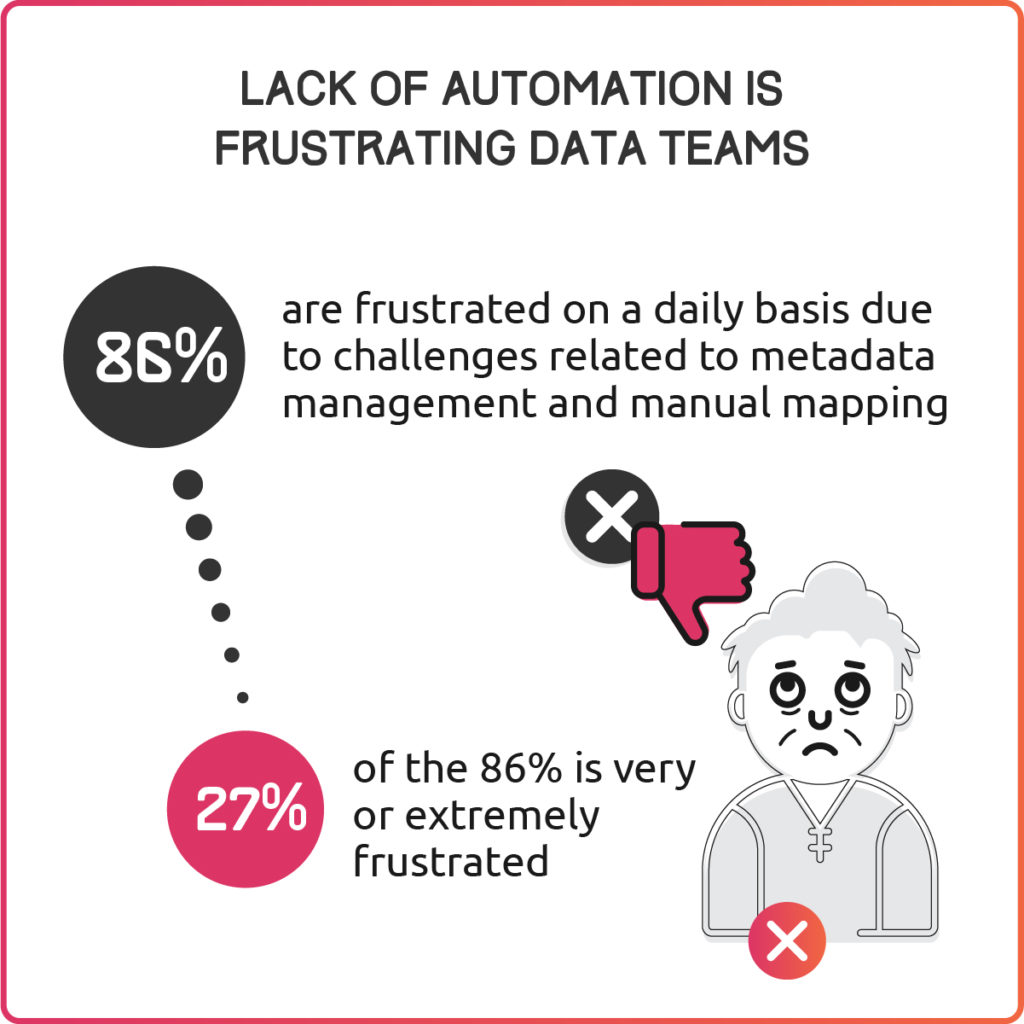
Considered BI grunt work to some, manual data discovery and data mapping might take days to determine reporting error sources, prepare data for system migration, or conduct impact analysis ahead of making a change to a process. So it’s no wonder that a majority of BI professionals are not happy with the systems in place and/or have difficulty completing manual data management. For instance, only 20% of respondents expressed satisfaction with their current data lineage mapping capabilities.
Besides the frustrations of manual data discovery and data mapping, the survey also identified the top 4 use cases challenging BI & Analytics on a daily basis.
BI Teams’ Top Use Cases
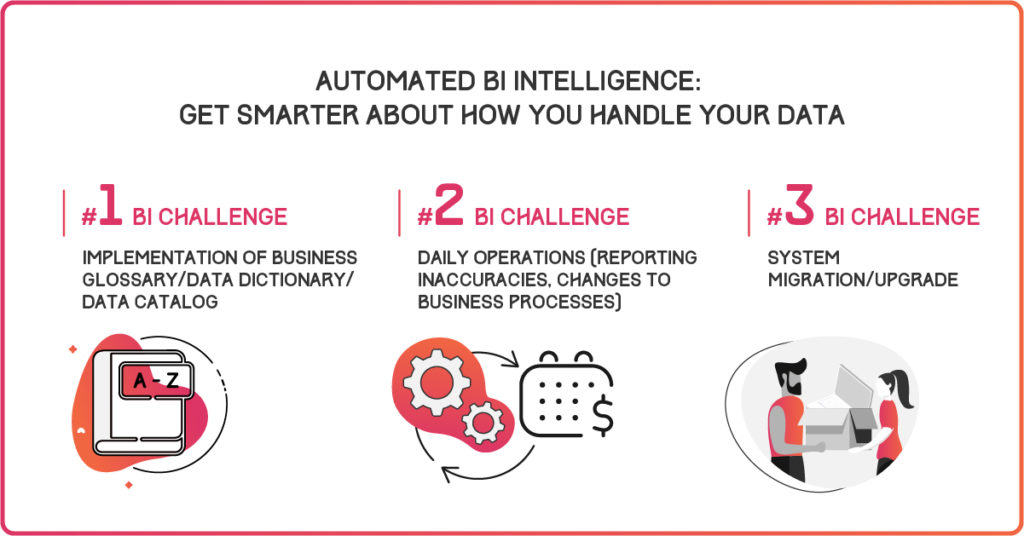
Use Case #1: A Business Glossary/Data Catalog/Data Dictionary
Respondents considered the implementation of a business glossary/data catalog to be one of the challenges they struggle with the most. This is clear when you consider that manually building a business glossary is a daunting obstacle which most organizations rarely ever manage to do. Manually, a business glossary is a time-consuming, never-ending process, particularly ineffective to wrangle information from in-house experts and team members and agree on terms across departments.
An automated business glossary, however, automates the information-gathering from all sources in an enterprise, brings them to one centralized place and keeps them current. Automating this process saves hundreds of hours.
Check out all of the results and insights of the Octopai and Dataversity Survey
Discover what your peers experience on a daily basis
Download the Report
Use Case #2: Daily Data Operations
Another BI challenge comes from everyday metadata management operations. This includes dealing with reporting inaccuracies, changes to business processes, system migrations or implementing requirements for regulations. Sixty-six percent reported they spend hours, days, and weeks locating error report sources.
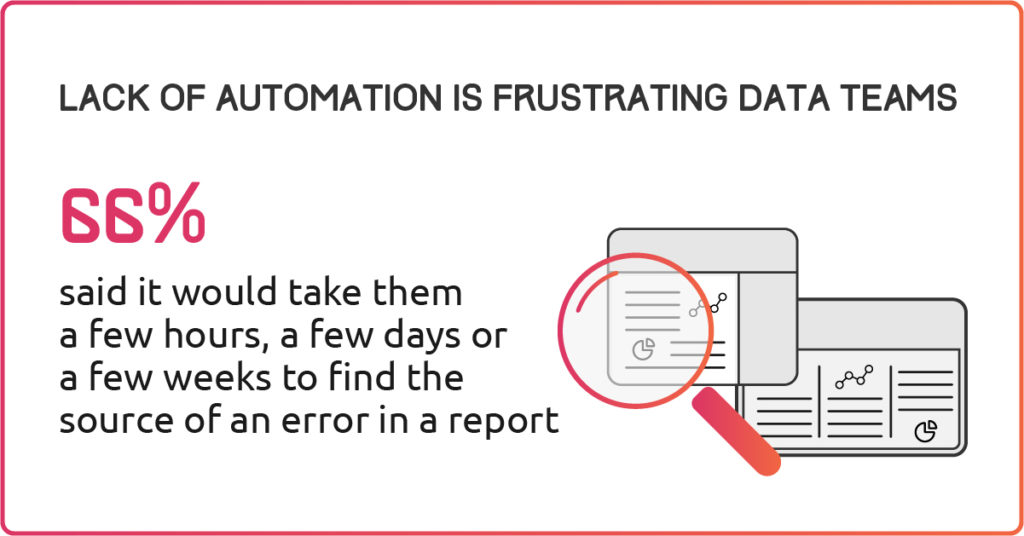
Despite the time spent on these problems, only 38% of BI teams have implemented automated tools. And what’s more? Even though 38% have implemented automated tools, a startling 63% are still unsatisfied with their current data lineage capabilities. Well, that sounds like a fail. Big time.
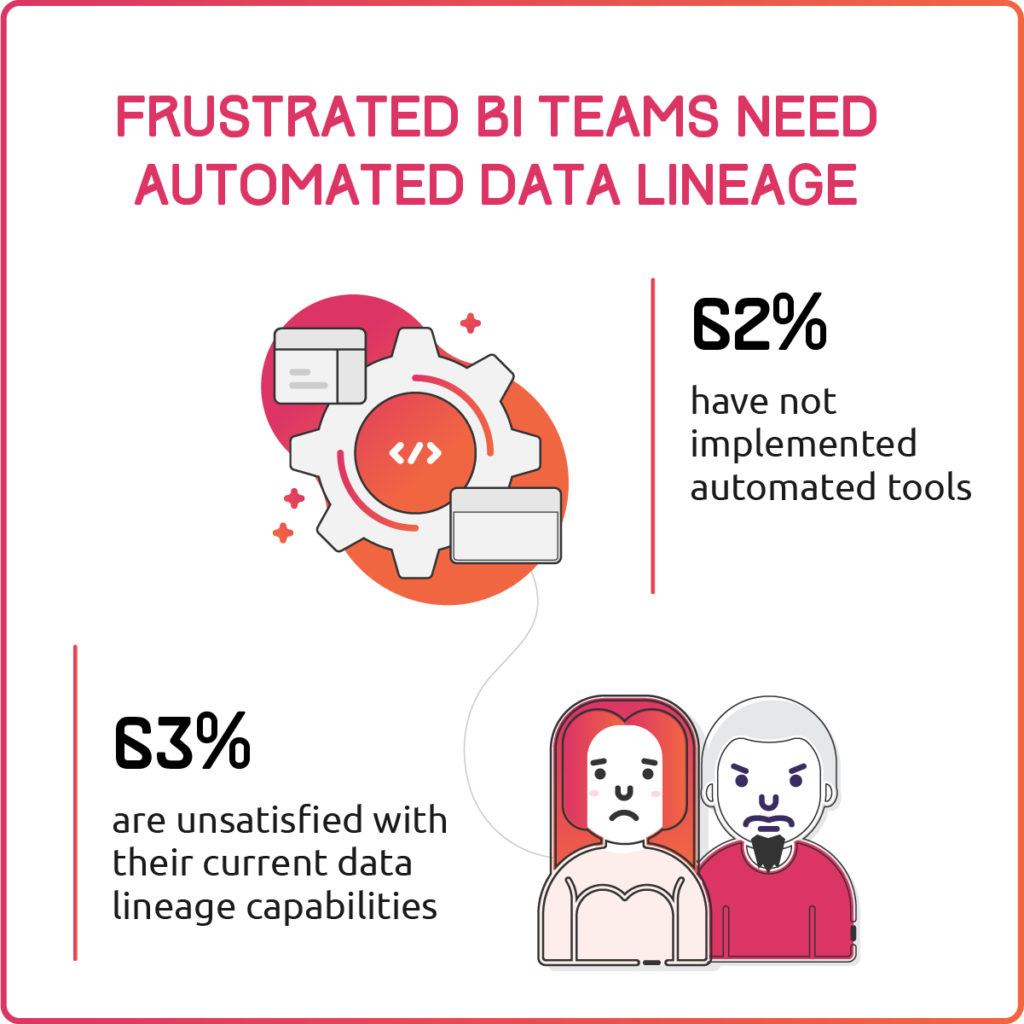
Meanwhile, an automated platform reduces demands on data analysts. Automation allows users to quickly find and diagnose errors, while dynamically accounting for business or process changes.
Use Case #3: System Migration and Consolidation
The final major challenge for BI teams is system migration or consolidation. System migrations are common nightmares to BI teams when they have to deal with the heavy lifting of massive data preparation, data clean up, and efforts to streamline data, reports, ETLs, jobs, and more, before moving it all over to a new system or consolidating systems.
Despite the importance of metadata lineage processes required to handle this type of work, 63% of respondents reported being unsatisfied with their current tools. An automated BI platform tracks lineage and metadata discovery from all origin points and encodes this data so your team can align data to migrate or consolidate faster.
The Solution to Resolving BI Professionals’ Frustrations:
An All-in-One Automated Metadata Management Solution
Unfortunately, many of the data discovery and data lineage tools on the market today are not automated and are not cross-platform. Since many organizational BI infrastructures are comprised of multi-vendor systems (data warehouse, ETL, analysis, reporting), cross-platform automation is essential. Not to mention, many BI teams are working across geographies or remotely and need all their data accessible for analysis on the cloud.
In short, a BI team avoids making mountainous problems out of granular ones when an automated metadata management platform is available. Automation accelerates day-to-day operations, ties the organization together through one central dashboard for performing data procedures, and keeps everyone accurate with one common language on a business glossary and data dictionary.
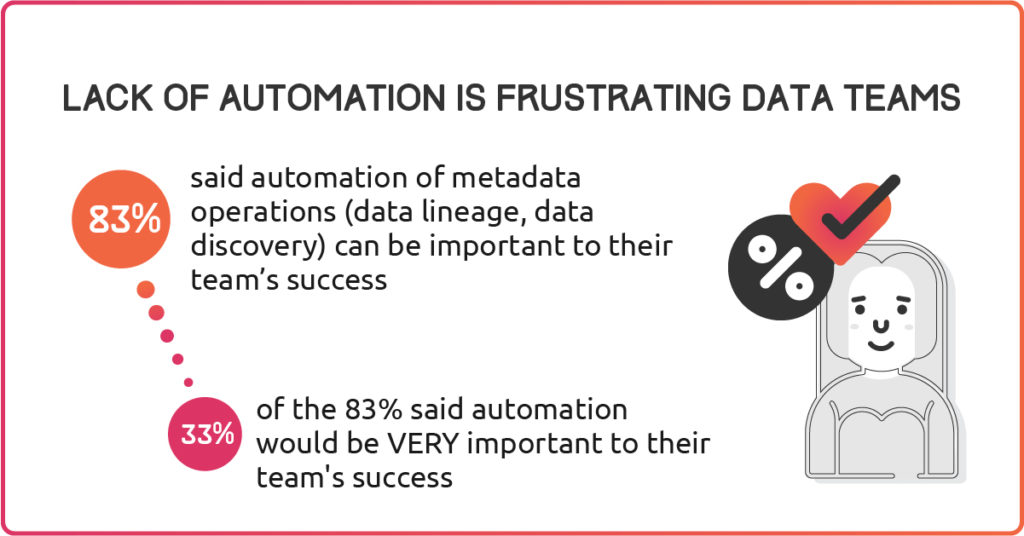
Download the full report here and feel free to check out the replay from our April 30th webinar for insights from the survey and a discussion on how automated BI intelligence is enabling data teams to get the full story on their data.








